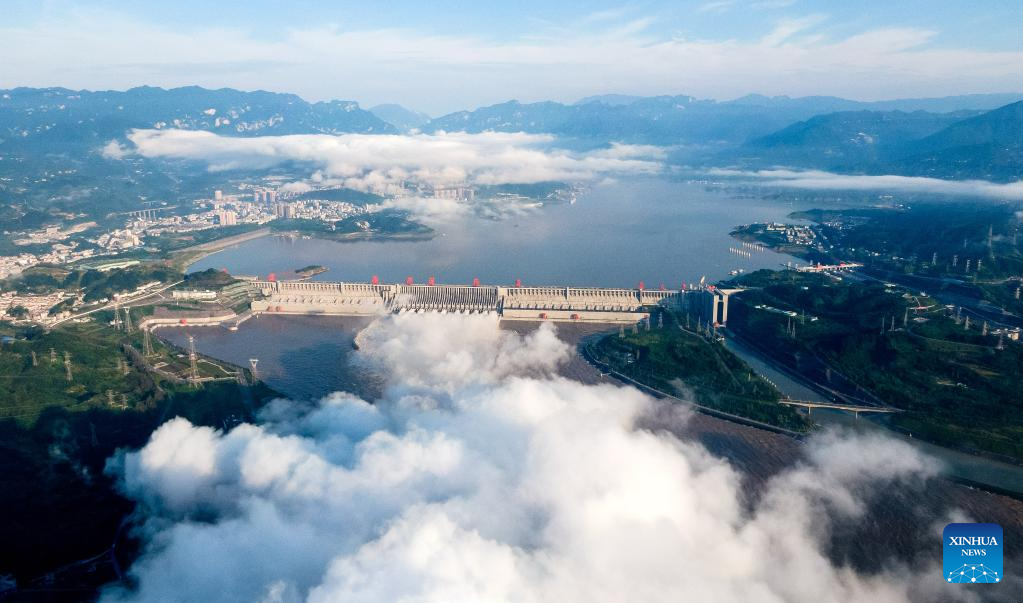
This aerial photo taken on Aug. 19, 2020 shows water gushing out from the Three Gorges Dam in central China's Hubei Province. The Baihetan hydropower station, the world's second-largest in terms of total installed capacity, went fully operational Tuesday in the upper section of the Yangtze River in southwest China, according to China Three Gorges Corporation. (Xinhua/Xiao Yijiu)
CHENGDU, Dec. 20 (Xinhua) -- The Baihetan hydropower station, the world's second-largest in terms of total installed capacity, went fully operational Tuesday in the upper section of the Yangtze River in southwest China, according to China Three Gorges Corporation.
Its operation marked the completion of the world's largest clean energy corridor, where six mega hydropower stations on the Yangtze work to transmit electricity from the resource-rich west to energy-consuming regions in the east.
Baihetan's full operation came after the last of its 16 hydro-generating units completed a 72-hour trial operation on Tuesday morning. With a total installed capacity of 16 million kilowatts, Baihetan is second only to the Three Gorges Dam project in the central Chinese province of Hubei.
"Baihetan signifies a major breakthrough in China's high-end equipment manufacturing, as it is equipped with 16 home-grown hydro-generating units, each with a capacity of 1 million kilowatts, the largest single-unit capacity in the world," said Lei Mingshan, chairman of China Three Gorges Corporation.
The full operation of Baihetan is of great significance to China's shift in energy structure, the construction of the Yangtze River Economic Belt, and the coordinated development of the regional economy in the country, Lei added.
The six hydropower stations on the Yangtze River, all run by the corporation, are expected to generate 300 billion kilowatt-hours of electricity every year, reducing coal consumption by 90 million tonnes and carbon emissions by 248 million tonnes.
Four of them -- Wudongde, Baihetan, Xiluodu, and Xiangjiaba -- are located on the Jinsha River, the upper section of the Yangtze River, while the other two -- Three Gorges Dam and Gezhouba -- are on the middle section of the Yangtze.
They form a 1,800-km-long clean energy corridor that also plays a major role in flood control, shipping, water resources utilization, and ecological security in the Yangtze River Basin. ■
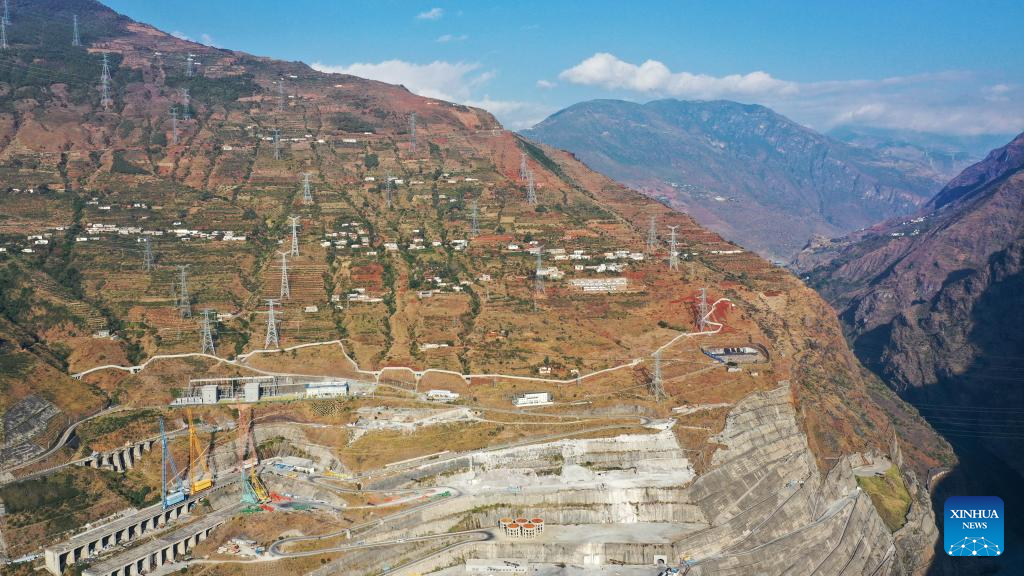
This aerial photo taken on Nov. 24, 2022 shows the ultra-high-voltage (UHV) power transmission circuit of the Baihetan hydropower station, which straddles the provinces of Yunnan and Sichuan in southwest China. The Baihetan hydropower station, the world's second-largest in terms of total installed capacity, went fully operational Tuesday in the upper section of the Yangtze River in southwest China, according to China Three Gorges Corporation.
Its operation marked the completion of the world's largest clean energy corridor, where six mega hydropower stations on the Yangtze work to transmit electricity from the resource-rich west to energy-consuming regions in the east. (Xinhua/Xu Bingjie)
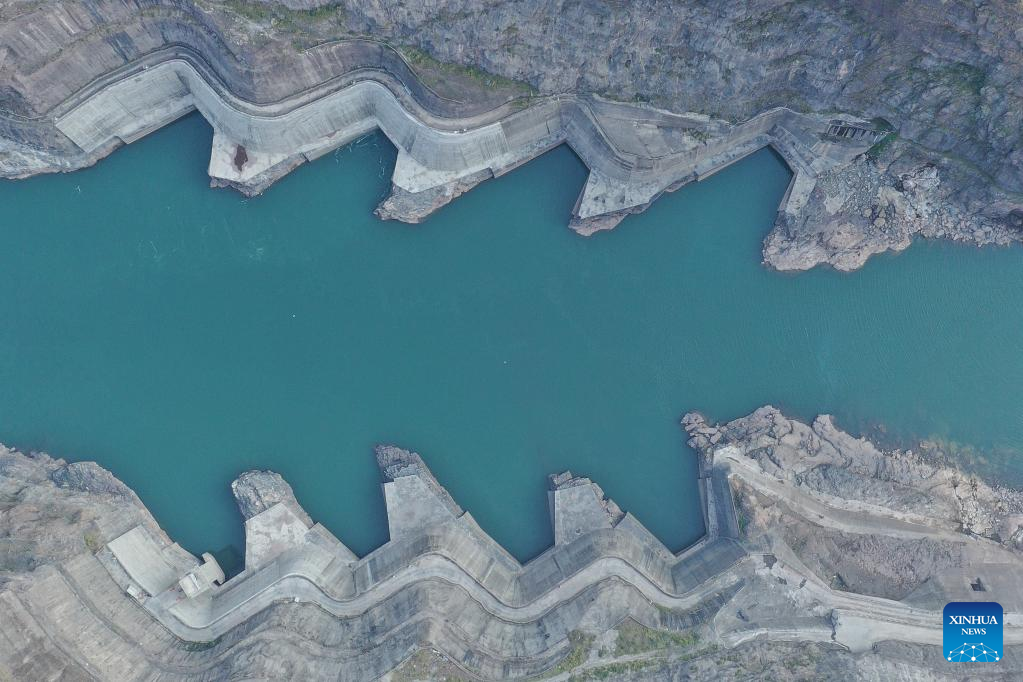
This aerial photo taken on Nov. 24, 2022 shows the water outlet of the Baihetan hydropower station, which straddles the provinces of Yunnan and Sichuan in southwest China. The Baihetan hydropower station, the world's second-largest in terms of total installed capacity, went fully operational Tuesday in the upper section of the Yangtze River in southwest China, according to China Three Gorges Corporation.
Its operation marked the completion of the world's largest clean energy corridor, where six mega hydropower stations on the Yangtze work to transmit electricity from the resource-rich west to energy-consuming regions in the east. (Xinhua/Xu Bingjie)

A flood discharging experiment is done at the Baihetan hydropower station, which straddles the provinces of Yunnan and Sichuan in southwest China, Oct. 29, 2022. The Baihetan hydropower station, the world's second-largest in terms of total installed capacity, went fully operational Tuesday in the upper section of the Yangtze River in southwest China, according to China Three Gorges Corporation.
Its operation marked the completion of the world's largest clean energy corridor, where six mega hydropower stations on the Yangtze work to transmit electricity from the resource-rich west to energy-consuming regions in the east. (Xinhua/Liao Wangjie)

This aerial photo taken on Nov. 23, 2022 shows the Xiluodu hydropower station, which is located on the lower reach of Jinsha River on the border of Sichuan and Yunnan provinces in southwest China. The Baihetan hydropower station, the world's second-largest in terms of total installed capacity, went fully operational Tuesday in the upper section of the Yangtze River in southwest China, according to China Three Gorges Corporation.
Its operation marked the completion of the world's largest clean energy corridor, where six mega hydropower stations on the Yangtze work to transmit electricity from the resource-rich west to energy-consuming regions in the east. (Xinhua/Xu Bingjie)
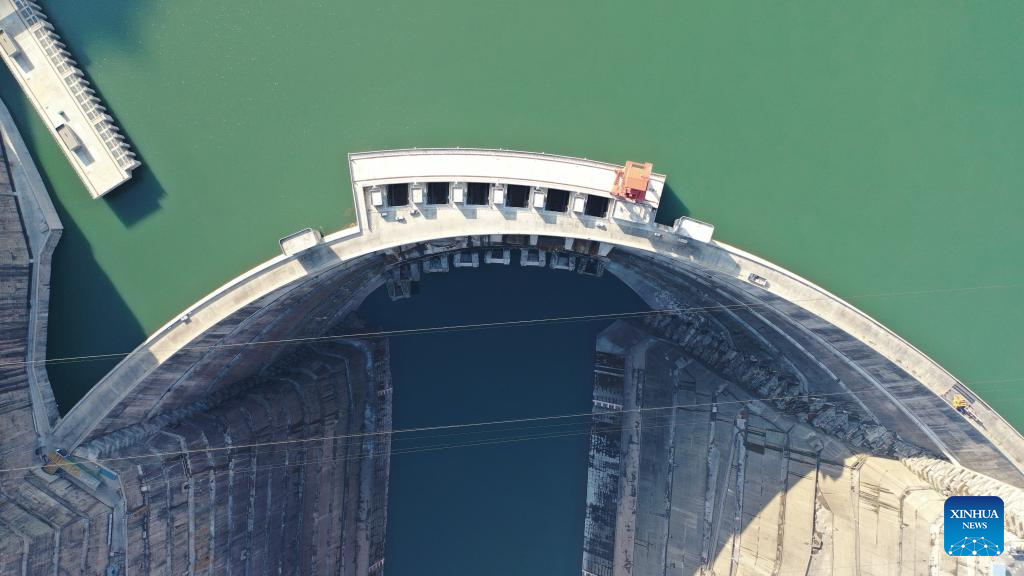
This aerial photo taken on Nov. 24, 2022 shows the Baihetan hydropower station, which straddles the provinces of Yunnan and Sichuan in southwest China. The Baihetan hydropower station, the world's second-largest in terms of total installed capacity, went fully operational Tuesday in the upper section of the Yangtze River in southwest China, according to China Three Gorges Corporation.
Its operation marked the completion of the world's largest clean energy corridor, where six mega hydropower stations on the Yangtze work to transmit electricity from the resource-rich west to energy-consuming regions in the east. (Xinhua/Xu Bingjie)
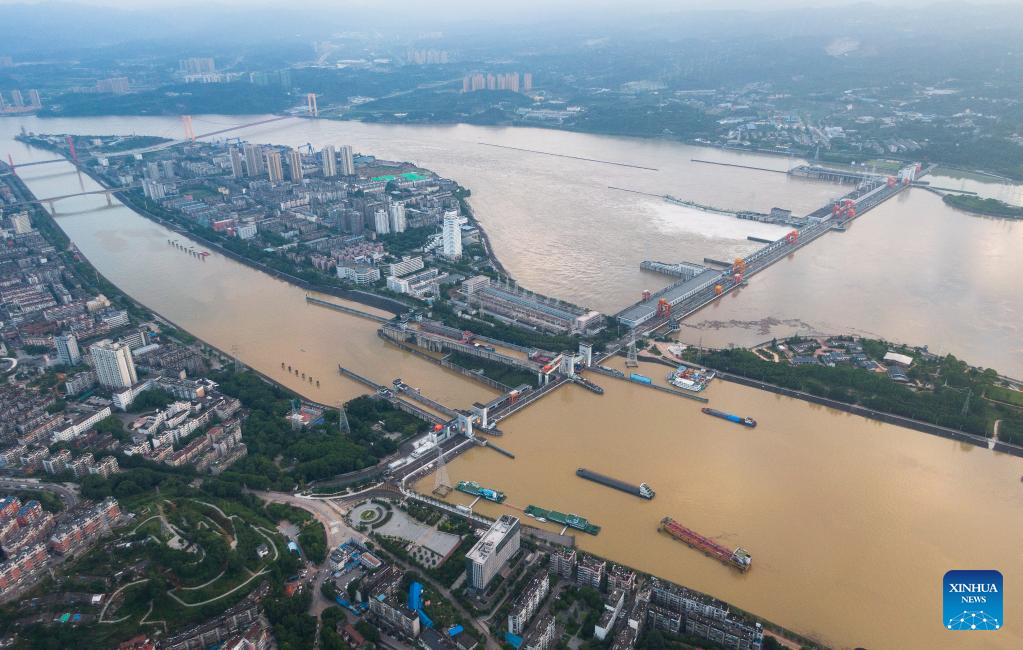
This photo taken on June 29, 2020 shows the Gezhouba hydropower station in central China's Hubei Province. The Baihetan hydropower station, the world's second-largest in terms of total installed capacity, went fully operational Tuesday in the upper section of the Yangtze River in southwest China, according to China Three Gorges Corporation.
Its operation marked the completion of the world's largest clean energy corridor, where six mega hydropower stations on the Yangtze work to transmit electricity from the resource-rich west to energy-consuming regions in the east. (Xinhua/Xiao Yijiu)
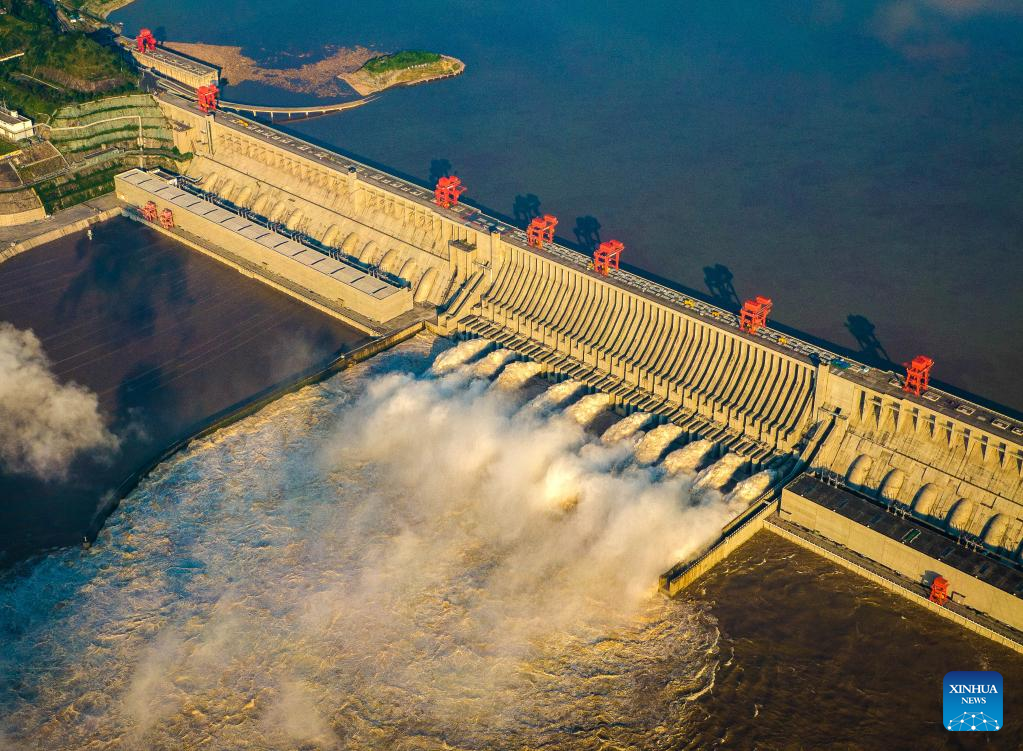
This aerial photo taken on Aug. 19, 2020 shows water gushing out from the Three Gorges Dam in central China's Hubei Province. The Baihetan hydropower station, the world's second-largest in terms of total installed capacity, went fully operational Tuesday in the upper section of the Yangtze River in southwest China, according to China Three Gorges Corporation.
Its operation marked the completion of the world's largest clean energy corridor, where six mega hydropower stations on the Yangtze work to transmit electricity from the resource-rich west to energy-consuming regions in the east. (Xinhua/Xiao Yijiu)
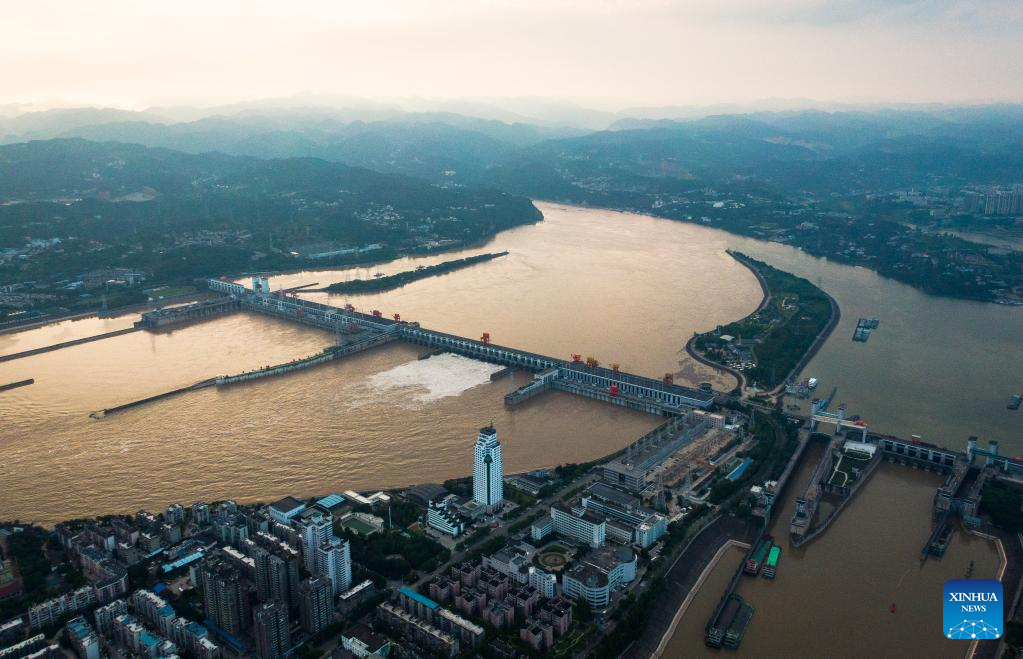
This aerial photo taken on Feb. 19, 2021 shows the Gezhouba hydropower station in central China's Hubei Province. The Baihetan hydropower station, the world's second-largest in terms of total installed capacity, went fully operational Tuesday in the upper section of the Yangtze River in southwest China, according to China Three Gorges Corporation.
Its operation marked the completion of the world's largest clean energy corridor, where six mega hydropower stations on the Yangtze work to transmit electricity from the resource-rich west to energy-consuming regions in the east. (Xinhua/Xiao Yijiu)
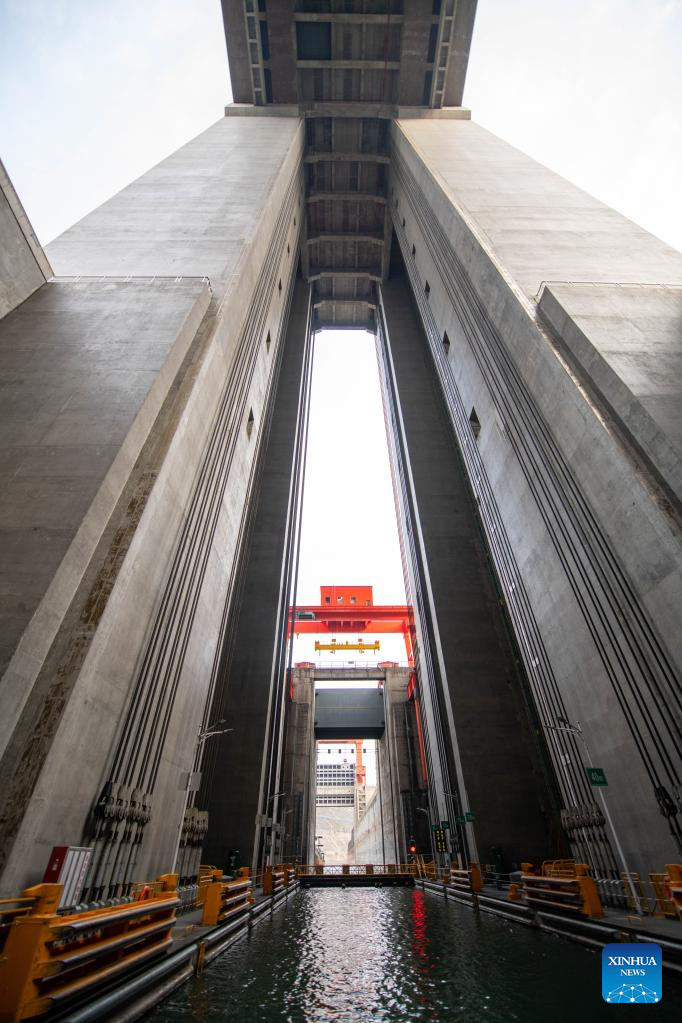
This photo taken on Nov. 21, 2022 shows the interior of the ship lift of Xiangjiaba hydropower station on the Jinsha River on the border of Sichuan and Yunnan provinces in southwest China. The Baihetan hydropower station, the world's second-largest in terms of total installed capacity, went fully operational Tuesday in the upper section of the Yangtze River in southwest China, according to China Three Gorges Corporation.
Its operation marked the completion of the world's largest clean energy corridor, where six mega hydropower stations on the Yangtze work to transmit electricity from the resource-rich west to energy-consuming regions in the east. (Xinhua/Xu Bingjie)

This aerial photo taken on Nov. 23, 2022 shows the Xiluodu hydropower station, which is located on the lower reach of Jinsha River on the border of Sichuan and Yunnan provinces in southwest China. The Baihetan hydropower station, the world's second-largest in terms of total installed capacity, went fully operational Tuesday in the upper section of the Yangtze River in southwest China, according to China Three Gorges Corporation.
Its operation marked the completion of the world's largest clean energy corridor, where six mega hydropower stations on the Yangtze work to transmit electricity from the resource-rich west to energy-consuming regions in the east. (Xinhua/Xu Bingjie)
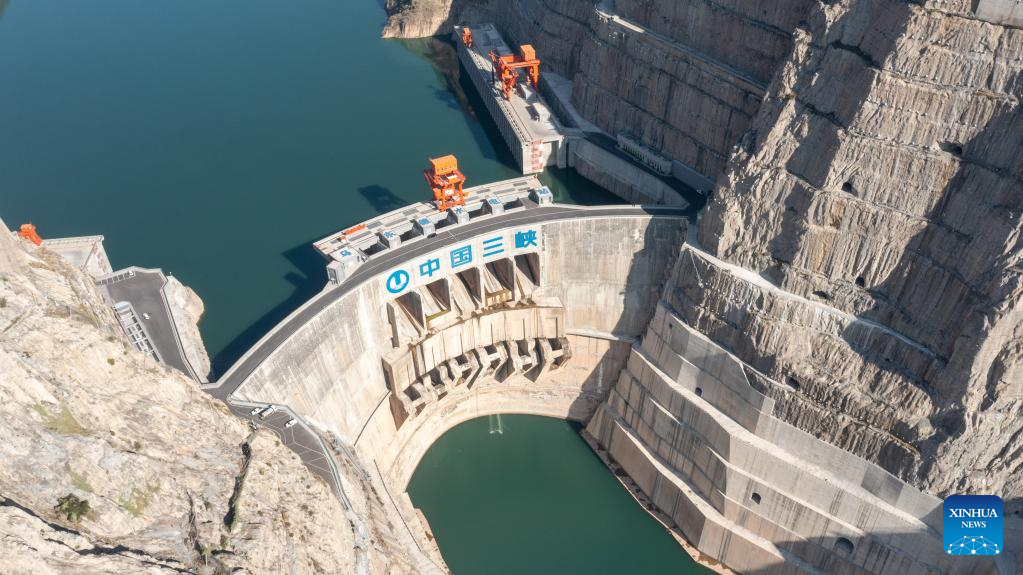
This aerial photo taken on Nov. 25, 2022 shows the Wudongde hydropower station on the border of Sichuan and Yunnan provinces in southwest China. The Baihetan hydropower station, the world's second-largest in terms of total installed capacity, went fully operational Tuesday in the upper section of the Yangtze River in southwest China, according to China Three Gorges Corporation.
Its operation marked the completion of the world's largest clean energy corridor, where six mega hydropower stations on the Yangtze work to transmit electricity from the resource-rich west to energy-consuming regions in the east. (Xinhua/Xu Bingjie)



